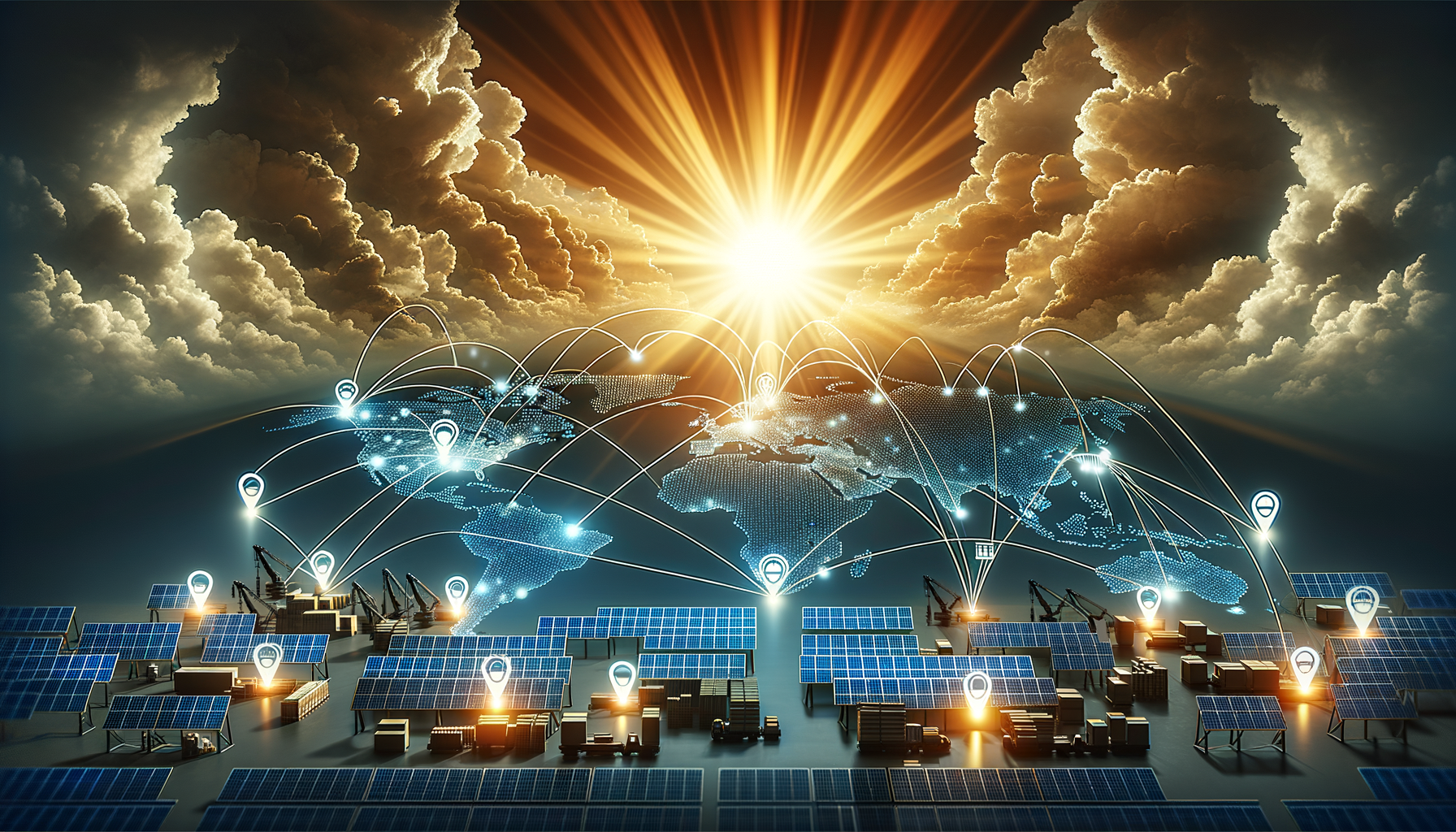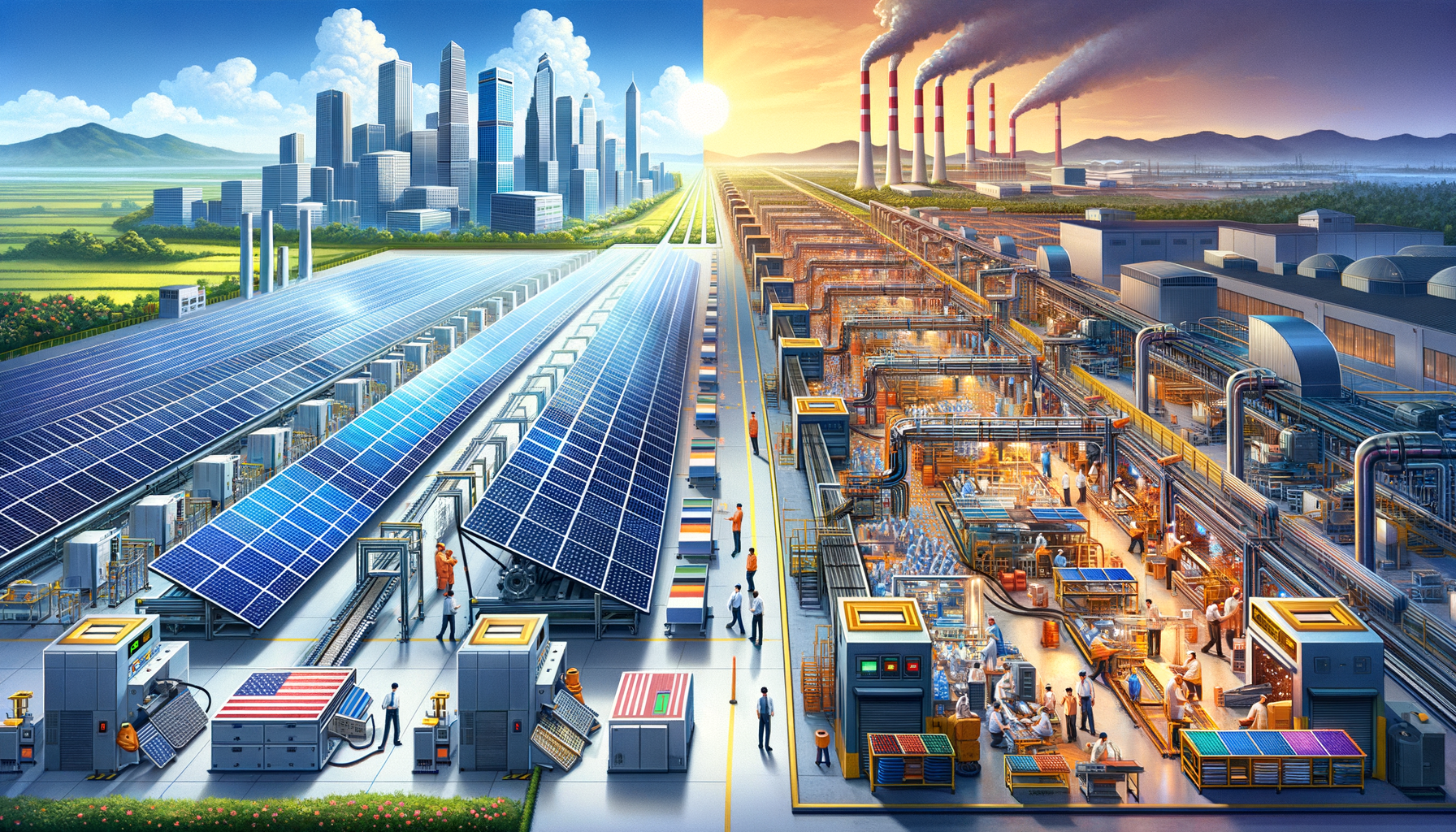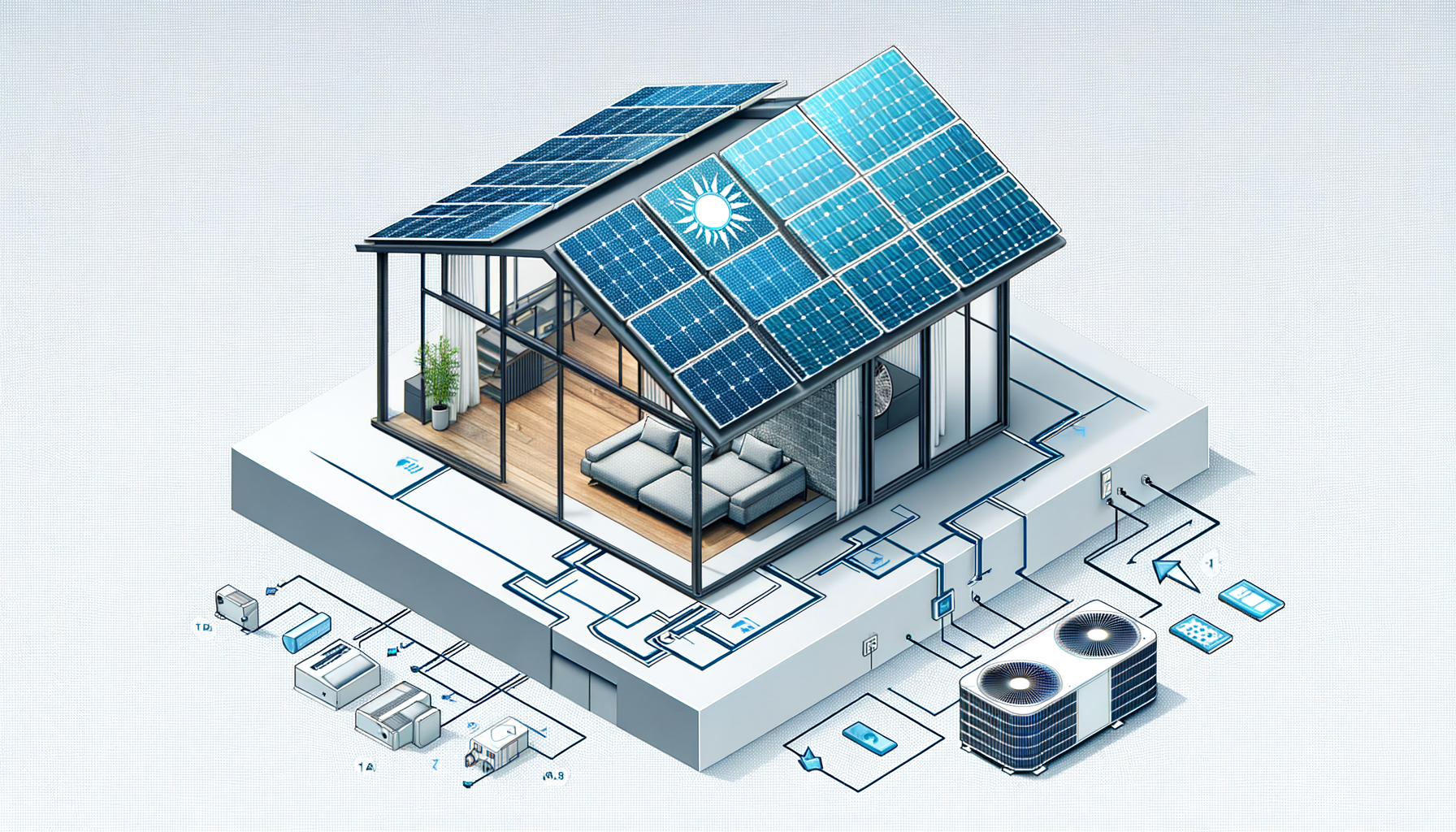The Global Tapestry of Solar Panel Manufacturing: A Spectrum from Local to International

Updated 4 months ago
Understanding where and how our solar panels are manufactured gives us valuable insight into the world's energy transformation. With climate change pushing humanity towards cleaner energy sources, solar power stands out for both its sustainability and growing economic importance. Yet, for the conscious consumer or the curious homeowner, the origins of solar panels can influence decisions far beyond mere economics.
The Complex Global Network of Solar Panel Production
Solar panels are products of a sophisticated and intricate global supply chain. They combine materials, labor, and technology from around the globe to harness the boundless energy of the sun. But why does this matter to the average consumer?
Tracing the Supply Chain
Each component of a solar panel—from the aluminum frame and glass cover to the silicon cells themselves—has its own story, oftentimes beginning in a different country than where the final product is assembled. China is known to dominate the manufacturing of solar panel components, especially polysilicon, the foundational material for solar cells. However, numerous other countries contribute to this chain, from the sourcing of raw materials to the assembly and export of the finished panels.
Spotlight on U.S. Manufacturing
In America, the interest in domestically produced solar panels has surged, inspired by a desire to support local economies and reduce dependency on international sources. Brands like First Solar, QCells, and others have emerged as leaders in American solar manufacturing, often setting up shop in regions eager for economic revival.
Despite challenges from international competitors, U.S.-based manufacturers continually invest in innovations and leverage policy incentives to grow their market share within an industry that's evolving as rapidly as the technology itself.
Eco-Friendly and Economic Empowerment
The choice of panel origins also intersects with ethical and environmental considerations. How far did the components travel? What are the manufacturing practices of the company producing them? These questions feed into the larger discussions around carbon footprints, clean energy jobs, and fair labor practices, which increasingly inform consumer choices.
A Global Dominance Shift
Asia, and specifically China, has become the solar epicenter thanks to favorable policies and competitive manufacturing costs. But this isn't just about geography—it's about a global move towards an empowered and sustainable future, with the U.S. potentially climbing back as a key player thanks to recent federal support and advancements in solar technologies.
Made in America: More Than a Label
American consumers have a heightened interest in the "Made in America" label for solar panels, associating it with quality, patriotism, and supporting the local economy. U.S. manufacturers sometimes command a premium for their products given the perception of superior quality and the clear and often commendable commitment to ethical labor practices.
However, the notion of a completely home-grown solar panel is complex. Even within the U.S., because of the intricacies of supply chains, certain components may be sourced internationally while assembly takes place on American soil. Examples of such companies include Mission Solar, with panels assembled in Texas, and QCells, which recently established manufacturing credibility in Georgia, despite its South Korean origins.
Considering Carbon Footprints and Geopolitical Echoes
Where a solar panel is made does not just speak to its quality or the economic interests it supports, but also to the environmental and social landscapes it influences. Imported solar panels can come with a hidden cost—not just in tariffs or taxes, but in the carbon footprint associated with their shipping and the geopolitical implications of international energy dependencies.
Economic Incentives and Ethical Implications
The global transformation towards sustainable energy is also a canvas for diplomatic negotiations, economic stratagems, and ethical decision-making. Do we know if our solar panels were manufactured with ethical labor practices? Are we aware of the possible environmental implications of their production and the recycling policies for retired panels?
A Comprehensive Guide to Solar Panel Origins
America's Solar States
Let's delve into the American states championing solar panel manufacturing and what sets them apart:
-
Ohio: Home to First Solar, the company has carved out a significant niche with its Thin-Film modules, which are different from the crystalline silicon panels that dominate the marketplace.
-
Georgia: Highlighted by QCells, Georgia is an emerging player in the U.S. solar landscape, despite its components not being 100% American-made.
Asia's Solar Behemoths
-
China: Leading the pack, Chinese manufacturers offer economies of scale that are hard to match, with giants like JinkoSolar not only serving the international market but also establishing facilities in the U.S.
-
Malaysia and Vietnam: Counted among the significant exporters of solar panels to the U.S., these nations are pivotal in the high-stakes game of international solar commerce.
Regulatory Factors Shaping Solar Geographies
Recent U.S. policies, such as the Inflation Reduction Act and import tariffs, aim to streamline and strengthen domestic solar production capabilities.
America's Solar Renaissance: Is It on the Horizon?
A resurgence of American manufacturing buoyed by innovation, investment, and incentives has raised hopes for a solar renaissance on U.S. soil. Will this be the catalyst for a more resilient, employment-rich, and sustainable solar industry? Only time will tell.
Navigating Your Solar Journey
With so much to consider, how does one navigate the world of solar with confidence? Look for solar companies with transparent supply chains and robust certifications. Trust manufacturers who invest in sustainable practices and strive for innovation. Contemplate the wider implications of your purchase beyond the immediate economics.
Let us guide you through the landscape of solar panel manufacturing origins so that you can make the most informed and impactful decision for your home, your community, and the planet.
Discover the potential savings and benefits of going solar by entering your ZIP code below. Let's illuminate your path to clean, renewable power today.
Image Recommendations:



In taking a step back to consider the global tapestry of solar panel manufacturing, we can appreciate both the complexities and the opportunities that lie within the push towards a greener future. Whether made in America or pieced together across continents, each panel represents a single, shining thread within a broader narrative of innovation, commitment, and hope.




